When it comes to learning how to play guitar, there are a lot of theory topics to study. One of those which is great for playing melody on guitar is scales. But what are the best beginner guitar scales to learn? And why? To answer these questions, we need to look at what scales are, and how to go about learning them.
What Is a Scale?
A scale can be defined as a series of notes written in alphabetical order, going from the root note to its octave. These notes are used for the writing and playing melodies. They are also the building blocks for harmony, as chords are built from scales. Here is a scale you may be familiar with:
Learning Beginner Guitar Scales
There are many great reasons why you should learn scales. Knowing scales will give you a greater understanding of music. Understanding the relationships between single notes and chords will result in better composition and songwriting. Also, practicing scales will enhance your finger technique and hand synchronization. Having both the technique and the knowledge increases your ability to play various melodies over the right chords at the right time. Learning and practicing scales is invaluable and will help you to develop faster as a musician.
What Are the Best Scales to Learn First
When it comes to guitar soloing, regardless of the music style, certain scales are used considerably more than others.
These main three beginner guitar scales are:
- minor pentatonic
- blues
- natural minor
The other three beginner guitar scales – the major pentatonic scale, major blues scale and major scale – are the relative major equivalent because they use the same notes and patterns. For more on relative major and relative minor scales, see Lesson 13 in Progressive Guitar Method – Theory.
Here are the most common patterns for each scale type, shown in a fretboard diagram and in tablature. These examples are all in the key of A so the root will be on the 5th fret of the 6th string.
The numbers inside of the dots indicate which fingering to use.
A Minor Pentatonic Scale
This scale has five different notes (penta = five) and the scale degrees 1 ![]() 3 4 5
3 4 5 ![]() 7.
7.
In the key of A these are the notes A C D E G.
A Blues Scale
This scale is the same as the minor pentatonic scale with one extra note added. Starting with the five notes of the minor pentatonic scale, you simply add “the blue note”, which is the ![]() 5 scale degree.
5 scale degree.
See the white notes added to the notes of the pentatonic minor scale pattern on the fretboard diagram.
The scale degrees are 1 ![]() 3 4
3 4 ![]() 5 5
5 5 ![]() 7. In the key of A the notes are A C D E
7. In the key of A the notes are A C D E![]() E G.
E G.
A Natural Minor Scale
The A minor scale or A natural minor scale is a seven note scale and has the scale degrees 1 2 ![]() 3 4 5
3 4 5 ![]() 6
6 ![]() 7. In the key of A the notes are A B C D E F G.
7. In the key of A the notes are A B C D E F G.
To make it easier to learn this scale, again notice the notes of the pentatonic minor scale pattern make up most of the natural minor scale pattern.
If you are a beginner guitarist, you may be familiar with the C major scale: C D E F G A B
As you can see, the notes of A minor – A B C D E F G – are the same notes of the C major scale, but they start on A instead of C. This is why we call the A natural minor scale the relative minor of the C major scale – because they are related by using all the same notes. In other words, when you learn how to play A natural minor scale you have also learned the C major scale.
It is called natural minor to separate it from the other minor scales – harmonic minor and melodic minor.
In Summary
There are many beginner guitar scales that we could learn. All over the world there are literally thousands of scales, some of them with complex interval combinations and some that sound very exotic.
As a beginner guitarist, it is good to first familiarize yourself with the three most commonly used movable scale patterns. That way you can relate and compare all new scales and scale patterns we learn to these basic three beginner guitar scales. A good scale book which includes suitable chords progressions to solo over can be of great help in further study of scales.
About the Author
Daniel Coffeng is an honors graduate from the Guitar Institute of Technology and is a Los Angeles, CA based performing guitarist, freelance studio musician and music educator specializing in modern contemporary guitar.
– Continue learning with Learn To Play Music at LearnToPlayMusic.com











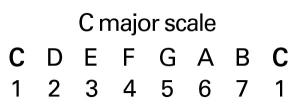
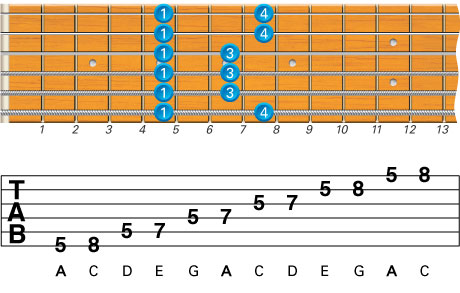
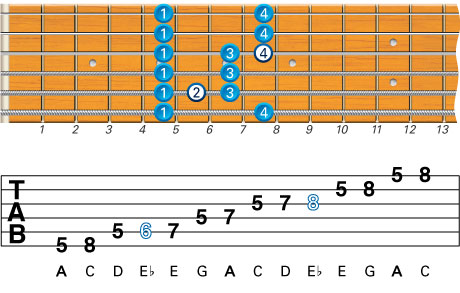
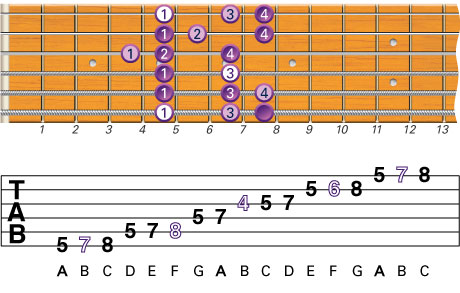












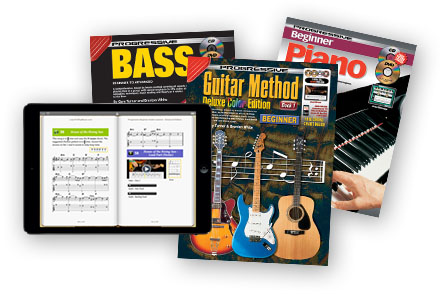






Hello, this was a really top notch post. I’d like to blog like this also – taking time and real effort to make a good article… but what can I say… I Am lazy and never seem to get something done.
Good day, just needed you to know I have added your blog post to my Google bookmarks due to your extraordinary blog layout. But seriously, I do think your website has certainly one of the freshest theme I’ve came across. It really tends to make reading your blog less complicated.
Hi . Thank you and I want to learn more
Thanks for helping me make sense of sales – its onward and upward from here
This post provided me with some good ideas. Thank you.
This is the first explanation showing the tab underneath a note layout on the fret board and it has made every thing so simply clear.There are so many people who are very good musicians but not very good teachers and this applies to books as well. I can now look at all the dots and know what they mean,thank you very much. Roger
Comment…I absolutely loved it, easy to understand in theory but very hard to implement practically my dear, therefore I need your help friends, thanks!
Scales are a key to learning to play music and with a variety of scales to learn, it is important for any beginner to start playing and understanding scales early on. That way you can easily relate and be able to compare any other new patterns.
Disappointing at best. 1-4 fingering on the low string for a major scale is NOT whole whole which is the first step required. 1-3-4 on low string is whole whole half which is major scale. No explanation of this at all. No explanation which OPEN STRINGS contribute to the scale. It’s like a computer geek explaining basic programming in COMPUTER TERMS.
Hi Rob, thanks for your feedback. Daniel has attempted here to provide only a basic introduction to the most commonly used moveable scales from which beginner guitarists can then build on. The Major scale and open strings are not covered in this post.
thank you for clicking my mind to scales. 50 years ago I played clubs – john prine like stuff. I forgot so much. you have refreshed my mind.
I am a lefty, WHERE IS THE HIGH E STRING…!!!!! top or bottom?
ooops I put my glasses on…i am good!
I didn’t have any expectations regarding that title, but the more I
was astonished. The author did a terrific job, he informed
me about the writer that wrote this https://lintrezza.com/cause-and-effect-essay-topics/. I
spent a few minutes reading and checking the facts. Everything
is very clear and understandable. I like posts that fill in your knowledge gaps.
This one is of that sort. Moreover, I like the way the author organized his
thoughts in addition to the visual part.